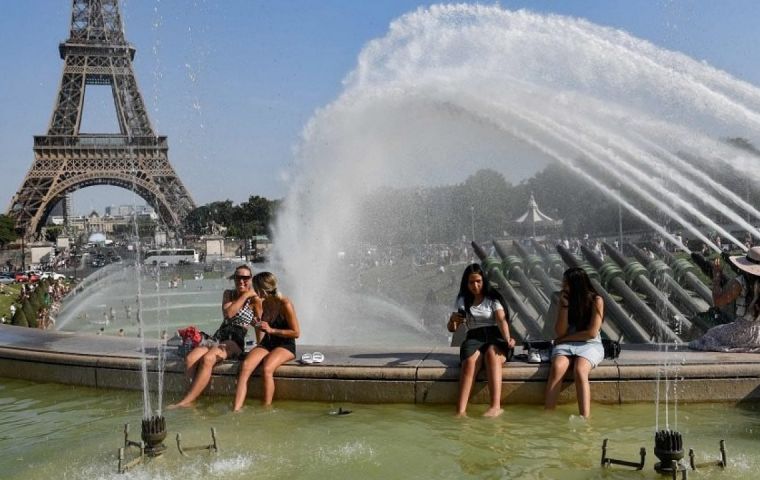MercoPress. South Atlantic News Agency
WMO warns temperatures in Europe rising twice as fast
 “Europe can play a decisive role in the emergence of a carbon-neutral society by mid-century, to meet the Paris Agreement,” said Taalas
“Europe can play a decisive role in the emergence of a carbon-neutral society by mid-century, to meet the Paris Agreement,” said Taalas Temperatures in Europe have gone up at a pace of about 0.5 °C per decade between 1991 and 2021, according to the United Nations' World Meteorological Organization (WMO) and the European climate change service Copernicus.
“This is the fastest warming among the six regions defined by the WMO,” Petteri Taalas said in the foreword to the report on climate released this week.
The Arctic, which as a whole is warming faster than Europe, is not considered by the organization as a region, spokeswoman Clare Nullis told AFP.
As a consequence of Europe's rapid warming, glaciers in the Alps lost 30 meters in thickness between 1997 and 2021, the report also noted.
Also, the Greenland ice sheet is melting, contributing to accelerating sea level rise. In the summer of 2021, Greenland recorded rainfall at its highest point, Summit Station, for the first time.
Europe “provides a vivid picture of a warming planet and reminds us that even well-prepared societies are not safe from the consequences of extreme weather events,” Taalas said.
“In 2021, a series of extreme weather and climate events occurred in several parts of Europe,” he added.
“The exceptionally severe floods that caused an unprecedented number of deaths and damage in parts of western and central Europe in July, and the destructive fires that devastated southeastern Europe this summer, will remain in the memory of the affected nations and in the international climate record,” he also pointed out.
These high-impact weather and climate events left hundreds of people dead, affecting over half a million others and causing economic damage worth over US$50 billion, according to the WMO. About 84% of the cases involved floods or storms.
This report was released just days before COP27, the UN climate conference to be held November 6-18 in Egypt.
The climate agreement reached in Paris in 2015 sets the goal of containing the increase in the planet's average temperature to below 2°C - and if possible below 1.5°C - in relation to the pre-industrial era. However, the planet is heading for a warming of 2.6°C by the end of the century, the UN warned in October.
Whatever the pace of global warming, all parts of Europe will see temperatures rise more than the global average, as observed so far, the WMO warned, which could lead to heat waves, forest fires, and floods.
Several European countries are well on their way to reducing their greenhouse gas emissions, which have already been reduced by 31% between 1990 and 2020 in the European Union. And by 2030, the goal is to achieve a net reduction of 55%.
“Europe can play a decisive role in the emergence of a carbon-neutral society by mid-century, to meet the Paris Agreement,” said Taalas.
Europe is also one of the most advanced regions in terms of cross-border cooperation for climate change adaptation, and around 75% of its population is protected from natural and weather-related disasters thanks to effective early warning systems.
(Source: AFP)




Top Comments
Disclaimer & comment rulesCommenting for this story is now closed.
If you have a Facebook account, become a fan and comment on our Facebook Page!